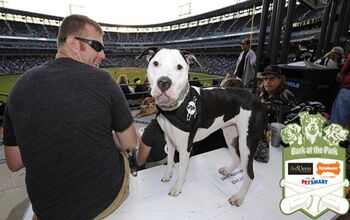Seeing your pup showing signs of pain is never easy, and the sight of blood can be particularly alarming. While a broken nail may not seem like a major source of alarm, that one small injury can introduce a lot of discomfort (and blood). But take a deep breath; you’re not alone in facing this common struggle.This blog post is designed to be an informative guide, walking you through the essential steps to take when your dog breaks a nail to relieve pain and prevent further complications. With the proper knowledge and a little care, most broken nail situations can be managed effectively, allowing your pup to get back on their paws in no time.First Aid for Dog Nail Injuries When you discover your dog has broken a nail, remain calm. Your dog may be in pain and feeling anxious. By staying calm and composed, you will help prevent further distress and avoid a possible accidental injury to you. Speak in a soothing voice and move slowly. If your dog is particularly sensitive to pain or tends to react defensively when hurt, you may wish to enlist the help of another person to gently restrain them. In situations where you’re concerned about being bitten, having a properly fitted muzzle on hand can ensure everyone stays safe while you administer first aid. Stop the BleedingBroken nails often bleed because they contain a blood vessel known as the quick. You'll likely see some blood if the break occurs above this point. The first step in managing this injury is to stop the bleeding quickly. When dealing with any type of bleeding, your first line of defense is to apply direct pressure. Use a clean cloth or a piece of gauze and firmly press it against the bleeding nail for several minutes, often longer than you may initially think. Resist the temptation to check frequently, as removing the pressure can disrupt the clotting process. For persistent bleeding, styptic powder or a styptic pencil is an effective solution. We ensure we always have at least one of the two in our pet-friendly first aid kit. Styptic powder contains ingredients that help constrict blood vessels and promote clotting. To use it, apply a small amount directly to the bleeding area of the nail. A styptic pencil works similarly; wet the tip slightly to activate it and gently press it against the bleeding directly. If you don’t have styptic powder or a pencil on hand, some common alternatives that dog parents will reach for are cornstarch and flour. They can help absorb blood and encourage clotting. The easiest way to use these is to put some into a small container and then place the broken nail in it, maintaining pressure to give the blood time to clot. Remember, patience is key during this step; the bleeding may take several minutes to stop. Assessing the Damage Look closely at the broken nail once the bleeding has stopped or significantly slowed. Is it a clean break near the tip? Is it a partial tear that’s still attached? Is the quick exposed, leaving a raw and sensitive area? Take note of any visible debris, such as dirt, splinters, or fragments of the nail itself. Your findings will help you decide on the best course of action to prevent further damage and whether you need to contact your vet. Initial Cleaning (If Possible and Safe)If your dog tolerates examining their paw and the bleeding is under control, you may be able to gently clean the area. Use lukewarm water to carefully rinse the paw and the broken nail. This can help to remove any loose dirt or debris that may be there. Avoid using any harsh antiseptics like hydrogen peroxide or alcohol at this stage, as they can be irritating to the exposed injury and potentially delay healing. The goal of this initial cleaning is simply to remove any obvious dirt that could contribute to further pain and discomfort. Your vet can do a more thorough cleaning if necessary. Understanding the Risks of Dog Nail Injuries While the immediate sight of blood from a broken nail can be alarming, the potential risks extend beyond this initial shock. Here are a few additional risks to be aware of: Pain and DiscomfortEven if you manage to stop the bleeding quickly, your dog can still experience significant pain and discomfort. The nail bed contains sensitive nerve endings, and a break, especially if it leaves the quick exposed, can create a very painful situation for your pup. Every time your dog puts pressure on the affected paw, they may feel a sharp or throbbing pain, leading to limping or a reluctance to walk or put weight on that leg. InfectionA break in the nail creates an open wound, providing an entry point for bacteria and fungal organisms that they may encounter in the environment. Simple things like walking on the ground, contact with dirt and debris, or even your dog’s own licking can introduce pathogens into the wound. Recognizing the signs of infection is crucial to addressing it as quickly as possible. Keep an eye out for the following red flags: Redness Swelling around the nail bedPus or discharge Increased pain or sensitivityWarmth to the touch Fever Lethargy Partially Broken Nails A partially broken nail poses its own set of risks to your pup. The jagged edge can easily catch on carpets, furniture, or outdoor surfaces, leading to further tearing of the nail and increased pain for your dog. Ongoing Irritation of the AreaThe irritation and discomfort can also trigger excessive licking or chewing at the affected paw. While your dog may be trying to soothe their pain, this behavior can make the problem worse by introducing more bacteria and potentially leading to self-inflicted wounds around the paw. Mobility Concerns In more severe cases, a broken nail can significantly impact your dog’s mobility. The pain and discomfort can make it difficult for them to engage in their usual activities, such as walking, running, and playing. This not only impacts their physical well-being but can also negatively impact their overall happiness and quality of life. Imagine being a high-energy dog who no longer has a safe outlet for all that energy.

























